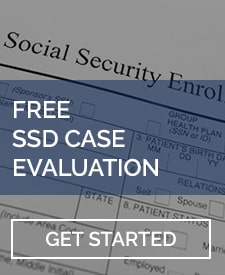These Vision Loss and Blindness Disability Facts May Surprise You
- In the United States, approximately 1 in every 3 Americans has some form of vision loss.
- The most common cause of vision loss is age-related macular degeneration, which occurs when the small central portion of the retina deteriorates and typically affects individuals who are age 60 or older.
- Glaucoma, cataracts, and diabetic retinopathy are the next most common causes of vision loss.
- Another form of vision loss is caused by presbyopia. This condition occurs when the lens inside the eye begins to lose its ability to change shape.
- It is estimated that 80% of vision loss can be prevented or cured. Meaning, depending upon the severity, there may be treatments to return or restore your vision, such as glasses, contact lenses, or surgery.
- However, 20% of those who suffer from vision loss experience a permanent visual impairment.
- If your vision loss is severe, you may be classified as being legally blind. To be considered legally blind, your visual acuity must be 20/200 or worse in your better eye, with corrective lenses.
- Visual acuity testing for legal blindness needs to be confirmed by an ophthalmologist. An ophthalmologist will perform an eye exam to determine the extent of your vision. This examination may consist of the doctor measuring your eyesight with and without corrective glasses.
- Even if you are not considered legally blind, the odds of you having difficulty performing your job are high if you are experiencing vision loss.
- If your vision loss has you unable to perform your job duties, you may be eligible for disability benefits.
How Do I Know if I Get SSI or SSDI?
There are two types of disability programs:
- Social Security Disability Insurance (SSDI) – Social Security Disability is a federally run insurance program that was started to provide financial and medical assistance to individuals who are unable to work due to a physical and/or mental condition. To be eligible for SSDI, you must first meet the technical requirements. SSDI is similar to other insurance policies you may have, such as car insurance. However, SSDI is funded by taxes. In other words, the federal government requires all individuals who earn an income through working to pay taxes on that earned income. Those taxes go towards your “premium” for Social Security Disability Insurance coverage. To obtain SSDI coverage, you must have paid a certain amount in taxes, generally taxes on earned income for the past five out of ten years. If you have paid enough in taxes, then you may qualify for the Social Security Disability Insurance program. SSDI pays monthly benefits out based upon the amount you specifically have paid in taxes. It also provides Medicare health insurance.
- Supplemental Security Income (SSI) – The technical requirements for Supplemental Security Income (SSI) eligibility do not mandate that you have paid taxes on your working income. SSI is set up similar to a federal welfare type of program, specifically for individuals who lack sufficient taxes paid into the system to qualify for SSDI. You will typically see someone who has never worked or has not been able to work the past five out of ten years apply for SSI. This program differs from SSDI in that the monetary benefit is a fixed monthly amount, reduced by any type of income or financial resource you may have. It is also governed by your state Medicaid program, rather than the federally run Medicare program.
What Is the Social Security Disability Evaluation Process?
Regardless of the program in which you meet the technical requirements, both require the same medical analysis in determining disability. When determining if you are disabled, the Social Security Administration will follow a five-step evaluation process:
- Impairment Severity – The second step considers whether you suffer from a severe physical and/or mental condition which impairs your ability to work. This threshold is very low. Meaning, as long as you can show you suffer from a condition that poses a minimal impact upon your ability to work, then you will be found to have a severe impairment and thus moving on to step three.
- Social Security Listings – Step three is a bit different in that it considers whether your conditions meet or equal one of Social Security’s set listings. The listings are exactly how it sounds. It is a list of medical conditions which the SSA has deemed so severely that the conditions would cause a disability, as long as the medical evidence supports certain criteria. (In the case of visual loss, the SSA will consider listings 2.02-2.04. Listing 2.02 considers the loss of central visual acuity. To prove you meet this listing, you must show the remaining vision in the better eye after correction is 20/200 or less. Listing 2.03 considers contraction of the visual field in the better eye with the widest diameter around the point of fixation no greater than 20 degrees, or an MD of 22 decibels or greater, or a visual field efficiency of 20 percent or less. Listing 2.04 considers the loss of visual efficiency or visual impairment in the better eye with a visual efficiency percentage of 20 or less or a visual impairment value of 1.00 or greater after best correction. To prove you meet or equal one of these listings, you would typically need to show visual testing performed by an optometrist.)
- Residual Functional Capacity – If you do not meet the requirements of a Social Security listing, the SSA will then move on in terms of the disability analysis to evaluate your residual functional capacity. This step considers whether the functional limitations resulting from your condition prevent you from performing your past relevant work. If they do, then you will move on to step five.
- Work Opportunities – Step five considers whether there is any type of work that can be performed in the U.S. national economy based upon your limitations. If your conditions are found to be work preclusive, then you will be found disabled.
Clearly, there are a significant number of rules – and exceptions to the rules – in the Social Security Disability evaluation process. If you read this article about vision loss and blindness disability facts because you are struggling to work due to vision impairment, applying for disability benefits may be right for you.
However, like the Social Security Disability evaluation process, the application process also can be technically complex. At the LaBovick Law Group, we provide free consultations to help you determine if and how you should apply for disability benefits. Call us today at (561) 623-3681 – one phone call could save you a significant amount of financial stress.





